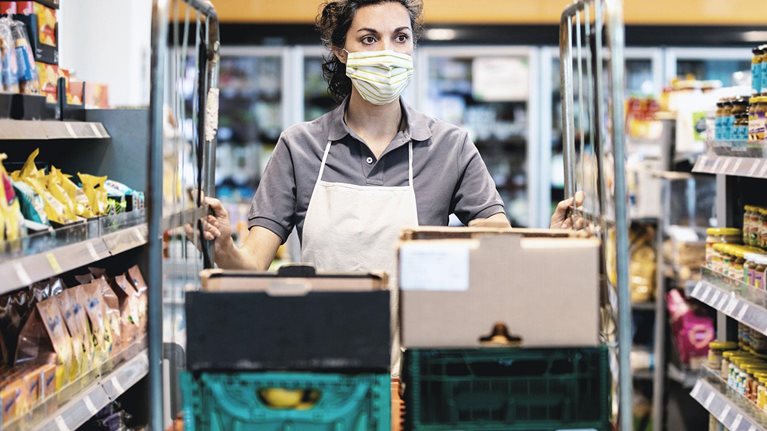Supermarkets have historically been retail success stories. After the first supermarket opened in 1930 in the United States, this new shopping format quickly gained popularity throughout the world because it offered customers superior value, convenience, and inspiration compared with offerings from traditional local grocers. Through economies of scale in procurement and more efficient operations, these stores could provide lower prices and consequently better value. Supermarkets offered a broad and high-quality assortment of goods—especially fresh foods—and became a convenient one-stop shop located in or near densely populated areas. They also provided a more pleasant shopping experience for customers.
But more recently, the value proposition for supermarkets in Europe has flattened, with many growing at or below the overall market growth. In a world with more fragmented needs, the appeal of a “good compromise” in value, convenience, and inspiration increasingly fades as customers split weekly baskets along multiple stores—or at least before the COVID-19 pandemic. For each of the three dimensions, specialized players emerged: discounters for value, online and convenience stores for accessibility, and superstores (for example, smaller hypermarkets focusing on food) or specialized stores for inspiration. Moreover, these players were able to improve their “spike,” or distinctiveness, while reducing former weaknesses.
Discounters are no longer only competing with lower prices. Initially winning with a small assortment and low prices, players such as Lidl have evolved and gradually expanded their SKUs without adding costs or sacrificing the perception of low prices. More recently, they expanded their fresh offerings, essentially transforming into “soft discounters.”
Online and convenience stores. Innovative digital players continue taking share from offline stores—mainly supermarkets and hypermarkets—as they compete on price, assortment, and ultraconvenience through features such as home delivery of groceries and nonfood items. Convenience stores have also made a comeback in recent years, offering a highly targeted assortment in a small format of less than 400 square meters. Factors include an increased demand for freshness, on-the-go options, and local convenience in high-density neighborhoods and areas with high foot traffic, along with changing demographics such as declining average household size and an aging population.
Superstores and specialized stores. Superstores have come under pressure in many markets in recent years. They built a significant customer base by providing a broader assortment of goods than supermarkets, including nonfood items, through large stores in either shopping centers or out-of-town locations. Now, specifically nonfood assortments have come under pressure, in part through the rise of nonfood e-commerce. They still maintain a strong value proposition for food, keeping pressure on supermarkets in large-basket shopping by stocking a broad assortment and offering a higher degree of flexibility in large-scale displays and counters. Meanwhile, specialized stores have put pressure on the competition by focusing on ultrafresh, local assortment, or value-added and premium products.
In summary, traditional supermarkets are increasingly challenged—unless they start to incorporate a spike themselves. Successful supermarkets are moving away from trying to cater to all consumer priorities and are instead gravitating toward incorporating spikes from rivals. Two successful models are “soft discounter” and superstores; both of them aspire to a clearer value proposition without sacrificing the traditional strength of the supermarket format.
Would you like to learn more about our Retail Practice?
Soft discounters focus on value for money but keep the assortment broad enough to remain a one-stop shop for the average shopper. Players such as Colruyt, Mercadona, Jumbo, or REMA 1000 sell a large share of high-quality private-label products and focus on offering only SKUs that cover basic needs (5,000 to 10,000 SKUs). This also enables them to gravitate more toward an everyday low price (EDLP) strategy, with occasional promotions instead of traditional high-low pricing. Lean, simplified store operations help keep costs down while still providing for a strong in-store experience.
Hypermarkets light (typically 2,500 to 5,000 square meters) offer a wide range of grocery items but in a smaller, more centrally located store format compared to classic hypermarkets. This model focuses on large food offerings but carries a narrower nonfood assortment to limit the overall number of SKUs. German hypermarket chain Kaufland and Italian hypermarket Esselunga are both successful examples of this approach. Another route would be to further emphasize the ultrafresh in-store product assortment through extended service counters for meat and cheese, in-store bakeries, and fresh food market halls. Eat-in options such as ready meals, takeaway options, and meal kits all add convenience for busy, on-the-go shoppers.
Irrespective of the route supermarkets take, enabling omnichannel grocery and adopting technology in the store will be key in creating a sustainable model going forward. Adopting in-store and online automation can create convenience and a better shopping experience. “Quick checkout” stores that allow shoppers to scan items as they shop, already in use by most major players at some locations, allow for quicker shopping trips.
Taking the concept further, selected Sainsbury, Co-op, and Reitan locations offer the option to purchase items without going through checkout, and the Amazon Go cashierless format is looking to expand in Europe. The increased availability of click-and-collect allows consumers to order online and select the most convenient curbside-pickup location.
Supermarkets will need to adapt to sustain their position in the long term. In an unusual year thanks to COVID-19-related market disruptions, many supermarkets found themselves as winners in 2020. It’s a unique opportunity for action, and one they should not lightly waste.




